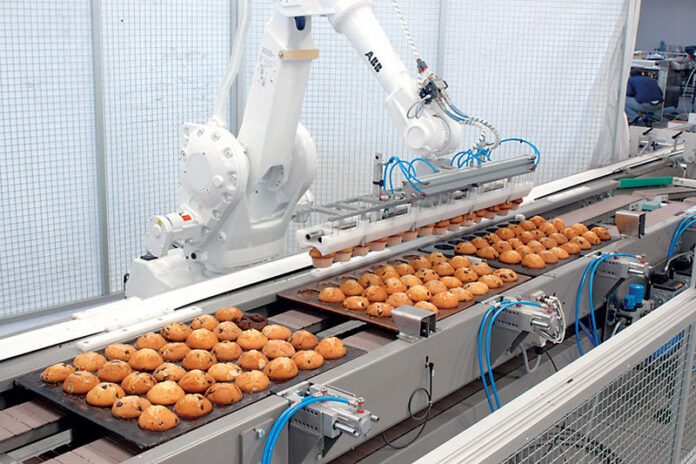
Recent years have witnessed a tremendous increase in robot deployment in the food industry that combines an extensive diversity of products, packaging, and handling variations than almost any other industrial sector.
There is a wide range of potential applications for robotics in food manufacturing and processing. Many food companies have successfully applied robots in various processes in the dairy, meat, baking, confection, frozen, snack, and even in beverage industries.
Notably, the increase in market demand, lack of low-cost labor, and advancements in robotic technology over the past decade has led the food manufacturers to replace their conventional, labor-intensive manufacturing operations and use the potential of robots to transform the processes in food processing and handling, palletizing and packing and food serving, that can assure high food hygiene, safety, higher production, and economic efficiency.
According to studies, food manufacturers can record an increase in productivity of +25% by employing robotics compared to the work done by a human chain. The introduction of robots in the food industry comes with significant potential benefits, including:
Product quality, uniformity, and hygiene
- High accuracy, repeatability, and seamless processing
- Good sensitivity for handling fragile products
- Low rate of errors caused by fatigue
- Efficient process control
- Better quality and damage control
- Eliminates human contact with foodstuffs
- Decreased incidents of cross-contamination
- Increased food safety
- Higher rate of production and consistency at an optimum speed
Reduced material waste and floor space
- Reduced downtime and wastage due to human error.
- High dexterity and efficient use of raw materials, therefore less waste from scrap
- Seamless processing and less waste from rejects
- Proper space utilization as robots can be placed on walls, floors, and ceilings
- Work envelope can be confined and compact.
- Proper space utilization since robots can be mounted anywhere, on walls, floors, and ceilings.
Reduced production and capital costs
- Robots eliminate costs associated with employing, training, and ensuring human labor
- They reduce energy bills as no special lighting, or thermal controls are required
- 24/7 continuous production (Lights-Out production)
- No spending on direct labor
- Offline programming that allows for production to continue without disruptions
- Robots eliminate costs associated with employing, training, and ensuring manual labor
- No delays caused by fatigue, sick leaves, or holidays
Improve working environment and safety compliance
- Removes employees from hazardous, tedious, and hostile tasks in unfavorable conditions
- Workplace safety for workers in unpleasant conditions with extreme temperatures, high noise levels, foul odors or harsh chemicals, and potentially dangerous cutting and pressing type machines.
- Existing staff trained for higher-level tasks improves motivation
- Training staff to program and maintain the robots improves their skills
- Reducing risks allows for the less stressful working environment
- Take over tedious, repetitive, and mundane jobs
- Eliminates work-related injuries; improved employee safety
Increased flexibility and reconfigurability
- Quick reconfigurability and switching between processes
- Sensor integration that allows for the handling of different product varieties
- Fast interchangeability and easy re-scalability up or down
- Instant supply chain responsiveness
- Faster process changes; easily reprogramed
- Faster product changes
- Faster adaptability to demands
- Versatility allows for quick changes
- Faster response to market demand; increased competitiveness
- Increased product variability that allows for customization and personalization
Robots are currently used by the food industry for packaging and palletization, but new applications are emerging. As robots and control systems become more sophisticated, more intelligent, and cheaper, some of the more complex applications will become both possible and affordable. It will be interesting, therefore, to see if the food industry will employ the same number of robots in the future as does the automotive industry at present.





















